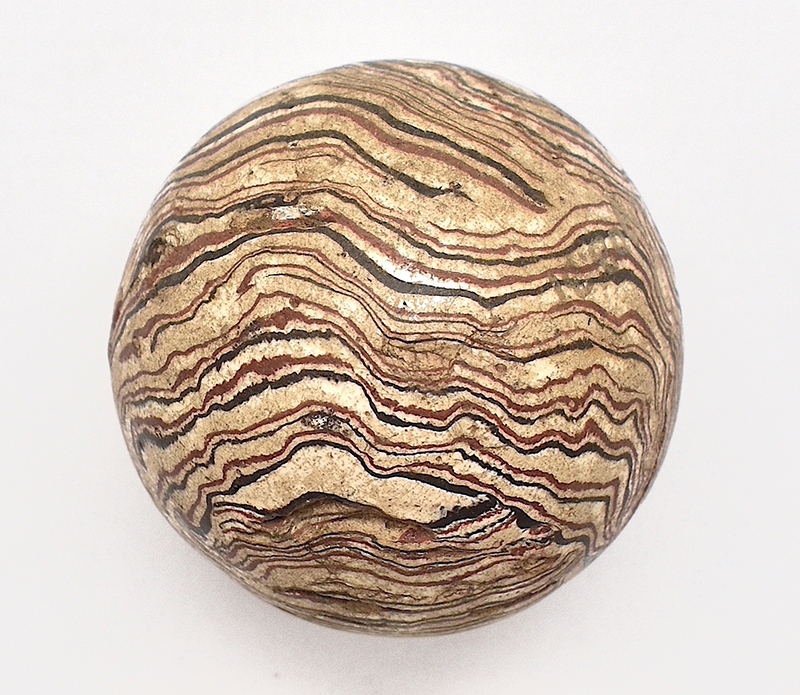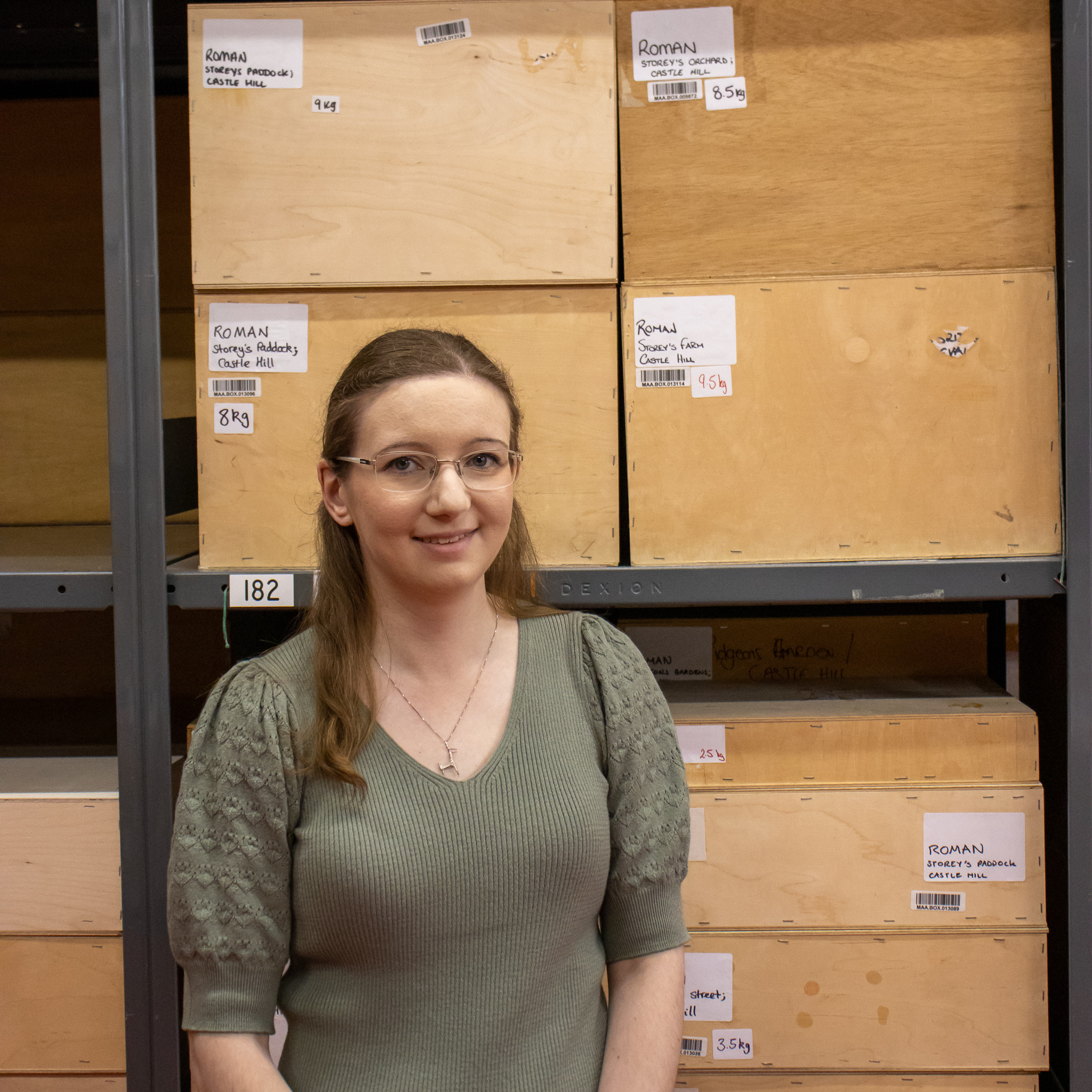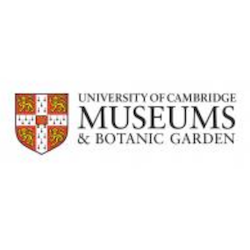
Agateware ball
Late 18th century
Cambridge, England
1903.31
"When acquired by the museum, the material composition of this ball was unknown. This mystery sparked my curiosity, and I discovered that it is made from agate ware, a pottery imitation of natural agate. As a geologist, I love the inspiration for this object, and I enjoyed uncovering its secrets!"
- Lizzy Peneycad
A ball of curiosity
Listen to an audio version of this text:
I was first drawn to this object because of its striking appearance of multi-coloured layers, which reminded me of the laminations seen in sedimentary rocks and banded minerals such as agate. I was further intrigued when I discovered how little we knew about the object in MAA’s records. When acquired by the museum in 1903, it was simply described as ‘a ball of a white vitreous substance, veined with black’. More recent records of the object told us that it was made sometime in the past 500 years, from an unidentified material, and for an unknown purpose. In other words, we knew next to nothing about the object, and for 120 years the ball remained an undiscovered curiosity within the collection.
That was until the Stores Move Project. This project has allowed us to take a closer look at the MAA’s collections, providing the ideal opportunity to solve the mysteries of unidentified objects. Through searching online, I was able to find similar examples of balls with multi-coloured laminations. These balls were made by combining different coloured clays to create a distinctive marble-effect pottery known as agateware. This pottery technique was developed during the 18th century in Stoke-on-Trent, Staffordshire, a city famous for its pottery industry. Decorative agateware balls, such as this object, were designed to replicate natural agate or marble spheres that were collected as souvenirs during the “Grand Tour”. The Grand Tour was a 17th-18th century tradition of undertaking a journey across Europe to discover its artistic, architectural and historical wonders.
I feel lucky to have uncovered some of MAA’s own wonders as part of the Stores Move project, and hopefully there will be many more to come!
Explore this object further:
https://collections.maa.cam.ac.uk/objects/570522/
Explore the full collections database:
https://collections.maa.cam.ac.uk
Lizzy Peneycad - Collections Assistant (Stores Move)
Lizzy Peneycad (PhD) is a Collections Assistant (Stores Move Project) at the Museum of Archaeology and Anthropology. In her current role she is documenting, photographing and packing collections at MAA’s off-site stores, ready for the move to the new Centre of Material Culture.
Lizzy has a background in Physical Geography and Geology (BSc Hons) and Quaternary Science (MSc), with a particular interest in the uses of biological remains to understand the past. She has undertaken research on the stable isotope analysis of rodent teeth from sites across Britain.
Prior to joining the MAA, Lizzy worked as a Project Move Assistant with Birmingham Museums Trust, supporting two major collections move projects. She also has an interest in increasing the accessibility of collections, and has volunteered with several museums to improve the storage and documentation of scientific, geological, and archaeological collections.







